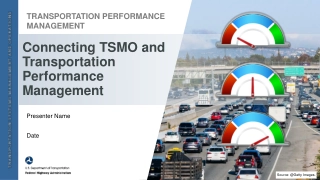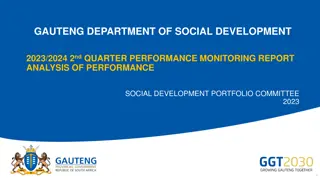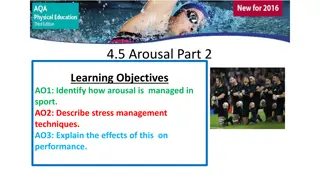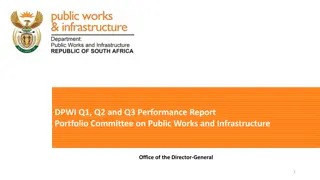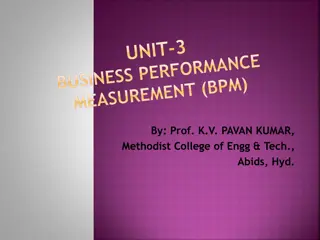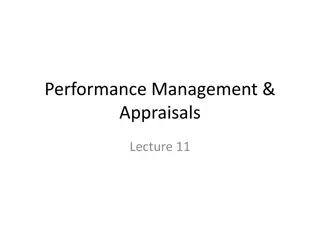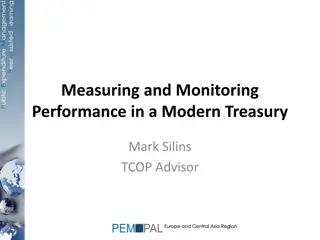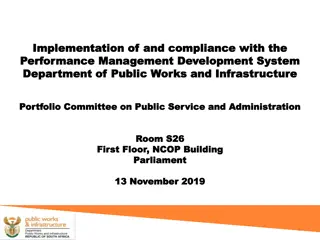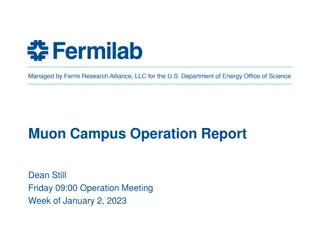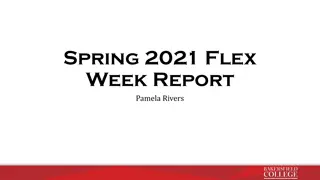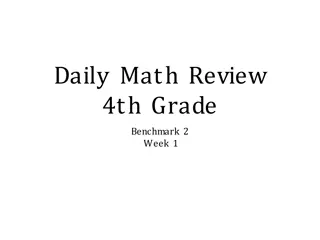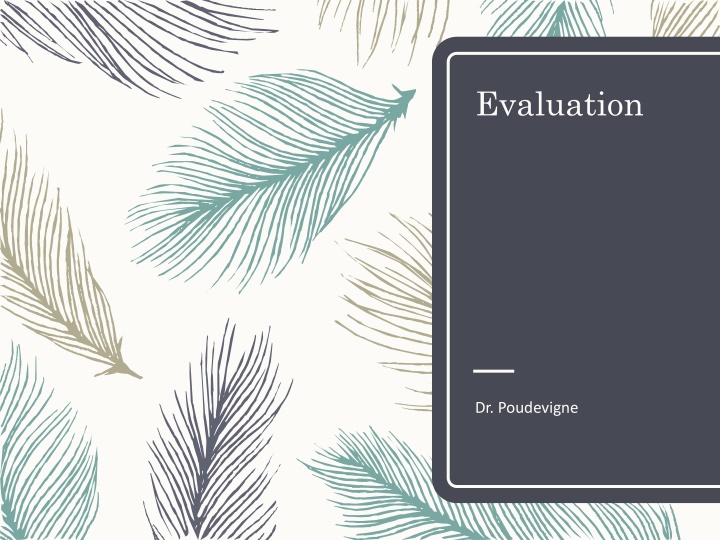
Effective Performance Measurement and Evaluation Strategies for Organizations
Explore the significance of continuous measurement and evaluation in facility and event organizations, identifying stakeholders, differentiating techniques, and understanding impacts. Learn reasons for measuring success, utilizing performance measures, and the importance of a balanced scorecard.
Download Presentation

Please find below an Image/Link to download the presentation.
The content on the website is provided AS IS for your information and personal use only. It may not be sold, licensed, or shared on other websites without obtaining consent from the author. If you encounter any issues during the download, it is possible that the publisher has removed the file from their server.
You are allowed to download the files provided on this website for personal or commercial use, subject to the condition that they are used lawfully. All files are the property of their respective owners.
The content on the website is provided AS IS for your information and personal use only. It may not be sold, licensed, or shared on other websites without obtaining consent from the author.
E N D
Presentation Transcript
Evaluation Dr. Poudevigne
Objectives 1. Explain the importance of continuous measurement and evaluation of facility and event organizations 2. Identify stakeholders who may provide valuable information for organizations to understand their performance 3. Differentiate measurement and evaluation techniques and the impact each measure has on the organization s various internal and external stakeholders 4. Define and articulate the strengths and weaknesses of the various internal and external measurement techniques
Why Measurement and Evaluation is Important Identify and solve problems. Find ways to improve management. Determine the value of the facility or event. Measure success or failure. Identify and measure impacts. Satisfy sponsors and other stakeholders. Gain acceptance, credibility, and support.
What are Performance Measures Used for? Eight common purposes for performance management: Evaluation, control, budgeting, motivation, promotion, celebration, learning, and improvement. Describe how well the organization is using its internal and external inputs to produce the desired output.
How and When to Measure Performance? Most facilities and events use a single measure at a single point of time (i.e., post- event) Strategies to improve measurement: Vary from whom they collect data Vary techniques used to collect data Qualitative Quantitative
Balanced Scorecard Created by Kaplan and Norton (1992) Provides a balanced view of overall performance (Check Figure in textbook or journal article in D2L) Evaluation starts with strategic objectives of the facility or event Helps manager translate organizational objectives into cohesive performance indicators within 4 dimensions Finance / Customer / Internal Business Processes / Learning and Growth
Example of Balanced Scorecard
Employee Outcomes & Measurements
Other Evaluation Models EFQM Excellence Model Helps measure performance through 5 enablers of organizational action with 4 results of organizational achievements and a feedback loop through innovation and learning to allow results to drive positive change and improvements of the enablers
Other Evaluation Models TAES Model Evolved from the EFQM model Process focus on the prioritization of improvements that is realistic, resourceful, accountable and completed on time These models are internal performance measurement evaluation processes They are different from benchmarking that provides an external perspective to evaluate internal performance.
Benchmarking 2 main categories: Data benchmarks Numerical standards for calculating performance indicators Process Benchmarks Compare processes and procedures and is aggregated with performance data
Assignment 1. Choose the Scorecard approach to evaluate your event 2. Outline your evaluation procedure that will be used at the completion of your event. 3. Present your event evaluation together with employee outcomes and performance evaluation 4. Provide an example of a survey provided to participants to reflect on your event.
Main references Aicher, T., Paule-Koba, A., & Newland, B. (2015). Sport Facility and Event Management, Burlington, MA: Jones and Bartlett Learning.

